HiFi amplifier purchasing advice: how to choose the right product
- What You Need to Know
- Stereo amplifiers are usually integrated amplifiers, i.e. devices that combine the preamplifier and the power amplifier.
- Integrated amplifiers adapt the input signal of the power amplifier and pass it on amplified to the speakers.
- There are different types of stereo amplifiers: Tube amplifiers, transistor amplifiers, hybrid amplifiers and class D amplifiers.
- It is particularly important that the amplifier has many different connections – both inputs and outputs.
- The power of the devices is rather secondary. More important are features such as efficiency, impedance and frequency range.
Studio quality for the home
Hi-fi (high-fidelity) amplifiers provide an exceptionally high-quality sound experience. They are the heart of the audio system and, along with the loudspeakers, the decisive element for sound quality. The amplifier’s task is to pick up the weak signal from the audio source – usually end devices such as record players or CD players – and to pass it on amplified to output devices, i.e. the speakers or headphones. Without an amplifier, the speakers will not make any sound.
This process can be accomplished by two separate devices or by a single one. In the latter case, we are talking about an integrated amplifier. In the former, we are talking about separate preamplifiers and power amplifiers – usually referred to as power amplifiers in technical jargon. The most common today are integrated amplifiers, i.e. one-piece devices that handle the entire process of signal reception as well as amplification and transmission. Amplifiers are divided into different classes according to their construction. Class AB and D amplifiers are particularly common.
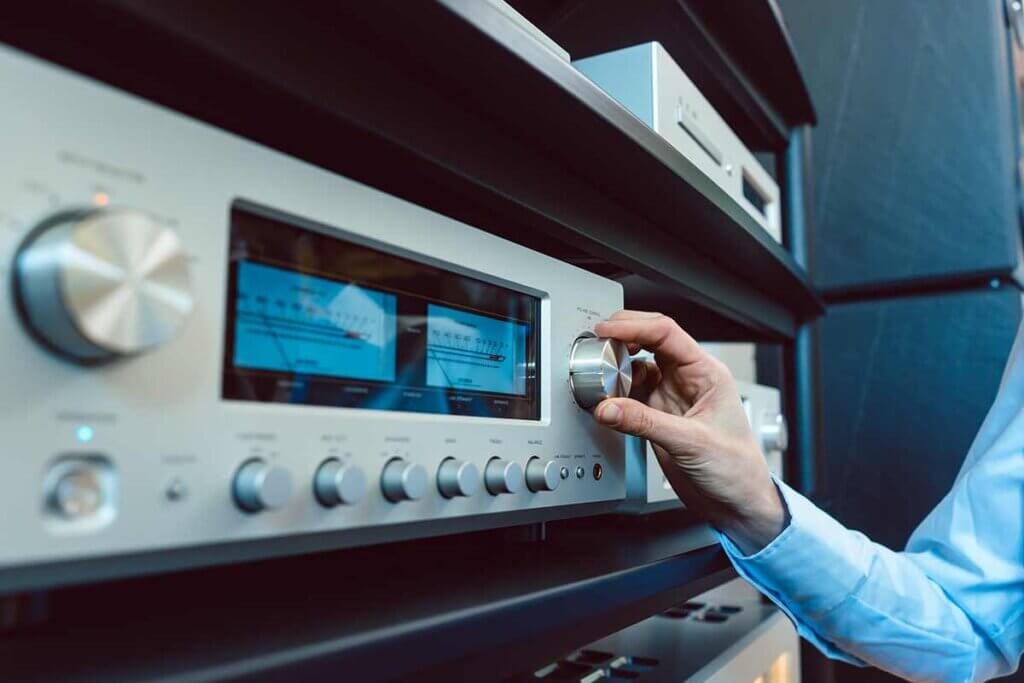
When is an amplifier HiFi?
An amplifier is called HiFi when it has a very high sound quality. For the assessment of sound quality, there is the DIN EN 61305-3 standard for HiFi equipment and systems for home use. One of the most important criteria that a HiFi device must fulfil is that it can reproduce the entire frequency range of the human ear, i.e. approximately between 20 and 20,000 Hertz.
The most important amplifier types
Not all amplifiers work the same. The technology used has a great influence on criteria such as purchase price and sound. There is no such thing as an objectively best type of amplifier. After all, the perception of sound quality is subjective. If you have the opportunity to try several different amplifiers on the same speakers, this is the best way to determine which type or even which model sounds best to you.
Tube amplifiers
Tube amplifiers have been around the longest. They use electron tubes to amplify low-frequency electrical signals. Nowadays, they are mainly popular among guitarists and audiophiles – in home use, they have largely been superseded by the newer transistor amplifiers.
But tube amplifiers are not only the oldest technology, they also have a vintage look. Among other things, they score points with the fact that they reproduce a clean sound without noise even at very high volumes. Audio lovers often say that tube amplifiers have a warmer and more natural sound. In the past, this was indeed the case compared to transistor amplifiers. Today, however, it is a self-fulfilling prophecy: manufacturers of tube amplifiers build their devices to produce the “warm” sound that audiophiles expect from the devices. In other words, the sound is adapted to the expectations. Such a sound is equally achievable with transistor models.
For this, users have to dig a little deeper into their wallets. On the one hand, the purchase price is usually higher than with transistor models, on the other hand, the devices cause more operating costs. The tubes are wearing parts that wear out over time and have to be replaced. Another disadvantage is that the music does not start immediately after pressing the play button. This is because the tubes need a few seconds to heat up.
Pro points
- Vintage aesthetics
- Clean sound at high volumes
- Warm, natural sound
Drawbacks
- High purchase and operating costs
- Slightly delayed sounding
Transistor amplifier
As the name suggests, transistor amplifiers use transistors instead of tubes. Initially, this led to a lower sound quality, but this is no longer the case: transistor amplifiers have been the most popular amplifier design for decades.
The popularity of this type of amplifier goes hand in hand with a variety of models. Such amplifiers are also represented in the lowest price ranges. Since no tubes are built in that have to be heated up first, they are ready to go immediately after being switched on. Moreover, transistors are smaller than tubes. That is why more compact designs are possible with them. The power dissipation and, accordingly, the power consumption are also lower than with tube amplifiers. Although transistors can become defective in very rare cases, it is much cheaper to replace them – it is very unlikely that you will have to change transistors in your unit.
The sound of transistor amplifiers usually remains neutral and unchanged, i.e. it is more faithful to the audio source and is not modified during playback, unlike tube amplifiers, which influence the sound characteristics to produce the characteristic warm sound. Whether this is positive or negative is a matter of taste. Transistor amplifiers are often criticised for not balancing the sound as well as tube amplifiers.
Pro points
- Low purchase and operating costs
- Wide variety of models
- Immediately ready for use
- Compact design possible
Drawbacks
- Sound not as well balanced
Hybrid amplifier
Hybrid integrated amplifiers combine the two technologies. With a tube preamplifier and a transistor output stage, they combine warm sound with high power – or low power dissipation. In other words, they combine the best of both worlds. However, they are somewhat rarer than the other versions, which may lead to a smaller number of models. They also tend to be a little more expensive.
Pro points
- Very high sound quality
- Combination of the advantages of tube and transistor models
Drawbacks
- Expensive
- Fewer models on the market
Class-D amplifier
Class-D amplifiers are often referred to as digital amplifiers. Nevertheless, such amplifiers are not really digital, but analogue. The signal is not digitised, i.e. converted into ones and zeros. Instead, the input signal is converted into a PWM (pulse width modulation) signal. The transistors of such amplifiers only know two states: conducting or isolating. They are therefore always either on or closed, which leads to a very low power loss or, in other words, a high efficiency of over 90 percent. The heat loss is also very low. Class-D amplifiers are also the most compact and are therefore often found in power amplifiers for headphones or smartphones. With some models, however, a certain basic noise is to be noted negatively.
Pro points
- High efficiency
- Very low heat loss
- Compact
Drawbacks
- Ground noise, if applicable
Other buying criteria
When choosing the right stereo amplifier, technical values such as efficiency, impedance or frequency range play the most important role. Decisive for its usability, however, are the connections. The more extensive the range of interfaces, the more flexibly the integrated amplifier can be used.
Connections
Ideally, a hi-fi integrated amplifier should have all the important inputs and outputs. Especially for home use, it is important to be able to connect it to as many devices as possible. You need the inputs to connect the amplifier to end devices that serve as audio sources. Phono inputs (usually called cinch) are particularly important, as they ensure the connection of record players or CD players. With a 6.3-millimetre jack, even the connection with microphones or electric instruments is possible. A USB port offers further networking possibilities. As soon as optical inputs and video connections such as HDMI are available, a stereo amplifier becomes an AV receiver (audio-video).
Cinch connections are also important as outputs to pass the amplified sound to the speakers. A 3.5-millimetre headphone output should also be included so that you can enjoy the high-quality sound without disturbing others if necessary. Many modern amplifiers have a Bluetooth function that allows them to be connected to Bluetooth speakers.
User interface
Knobs, buttons and small lights act as control surfaces on most amplifiers. A power button is always included. The largest knob is usually used to adjust the volume. The three other knobs are usually called “Bass, Treble and Balance”. “Bass” and “Treble” are used to control the treble and bass. The “Balance” knob is labelled “Left” and “Right” at the ends. It is used to adjust the volume ratio between the two sound channels – the right and the left. This is useful if, for example, the sound arrives asymmetrically due to spatial conditions. A remote control provides additional comfort. Especially modern devices can be controlled via touchscreen or smartphone app.
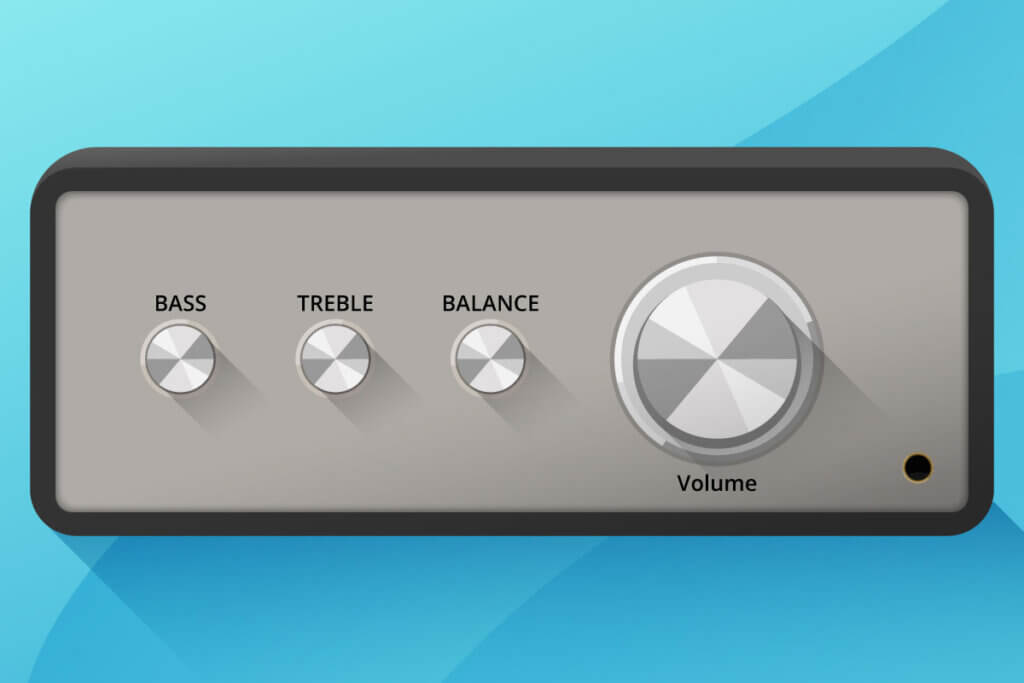
Signal-to-noise ratio
The Signal-to-Noise Ratio (SNR) is important for judging the sound quality. This is a slight humming noise that is perceptible in the loudspeakers when they are not currently reproducing active sound (useful signal). The higher the signal-to-noise ratio, the quieter the hum in relation to the volume of the wanted signal, which indicates high sound quality.
Impedance
Impedance refers to the AC resistance in ohms. The lower it is, the more power the amplifier delivers. Four, six or eight ohms are common for amplifiers. An impedance is also specified for loudspeakers. Ideally, this should be equal to or greater than the impedance of the amplifier to avoid supplying too much current to the speakers. However, current amplifiers usually have a circuit breaker built in to prevent the line from burning out in the event of a possible overload.
Efficiency
Efficiency provides information about the ratio between the energy used and the usable energy. It therefore provides information about how much of the energy is actually used or how much is lost as heat. The lower the power loss, the higher the efficiency. For a powerful, dynamic and undistorted sound, efficiency is more important than power. Depending on the design, the efficiency of amplifiers can range from 25 percent for class A amplifiers to over 90 percent for efficient class D amplifiers – an efficiency of 90 percent means that 90 percent of the transmitted energy or power reaches the loudspeakers.
Frequency range and response
Some manufacturers specify the frequency range of the integrated amplifier. This refers to the sound spectrum that can be produced, i.e. the highest treble and lowest bass that the amplifier can reproduce. It is important that the frequency range of a healthy human ear is covered. This is between 20 and 20,000 hertz, which corresponds to about ten octaves. Frequencies outside this range cannot be perceived by humans and are therefore irrelevant.
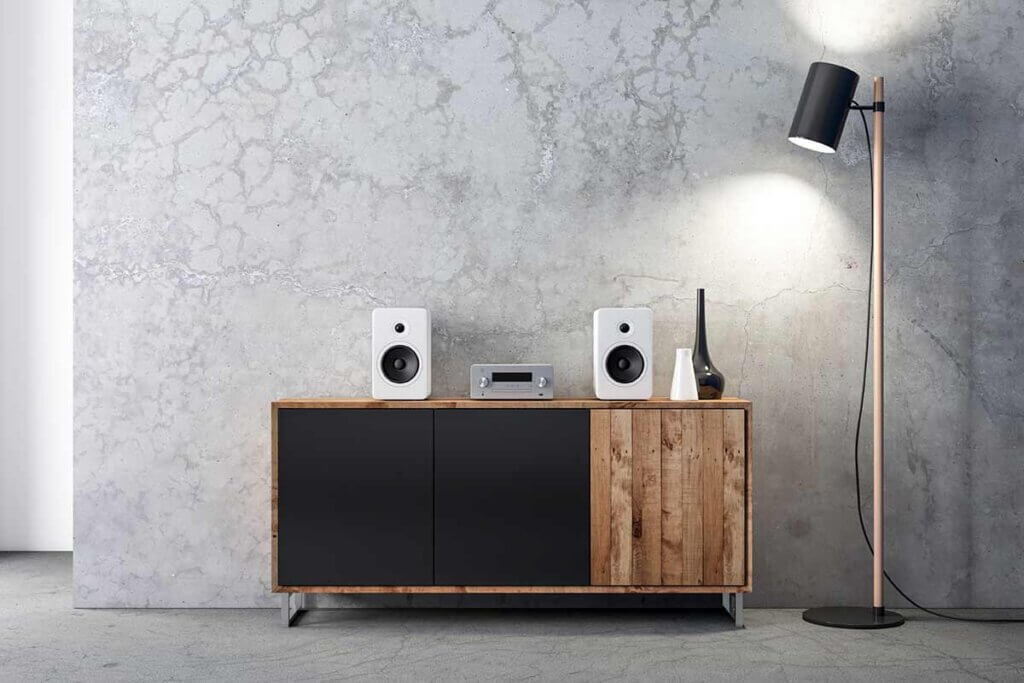
The frequency response is also particularly important. This shows how evenly the volume sounds at the different frequencies and thus ensures a constant noise level. Even a deviation of four decibels in the level leads to an unrealistic sound reproduction.
Power
No one should buy an amplifier or loudspeaker based on its wattage. It is almost impossible for a layperson to interpret this correctly because of the inconsistent measuring methods used by manufacturers. Even a few watts may be enough to achieve a very high noise level. In addition, the efficiency of the amplifier and the speakers is also decisive for how many watts are really used. So don’t let the numbers influence you too much.
Often the power is given in power per channel – for example “2 x 100 watts”. This refers to the maximum power that a single channel can apply when only it is used. If several channels are active at the same time, the power per channel decreases because the channels eventually draw power from the same source.
Loudspeakers also usually have a wattage rating on them. It is often advised to match this with the wattage of the amplifier, so that the power per channel corresponds to the power per speaker cabinet. However, this wattage tells you how many watts the speaker can handle, not how much it needs. But this can be easily tested: If you turn up the speakers and they start to distort, they have reached their maximum level and should be turned down again to avoid damaging them. It is therefore more sensible to base your purchase on the desired maximum level and not on the wattage. Distortion of the sound is a distortion of the acoustic signal. The sound seems unclean and accompanied by a hissing noise. With electric guitars, this effect is often intentional and can be produced by a distortion unit.
Design
For many people it is important that the amplifier has a chic design. After all, it often occupies a central position in the living room. As a rule, stereo amplifiers are plain cuboids in black or silver. Both matt and mirror surfaces are available, depending on the model. Tube amplifiers, which often aim for a retro look, are sometimes even clad in wood or have components made of brass.
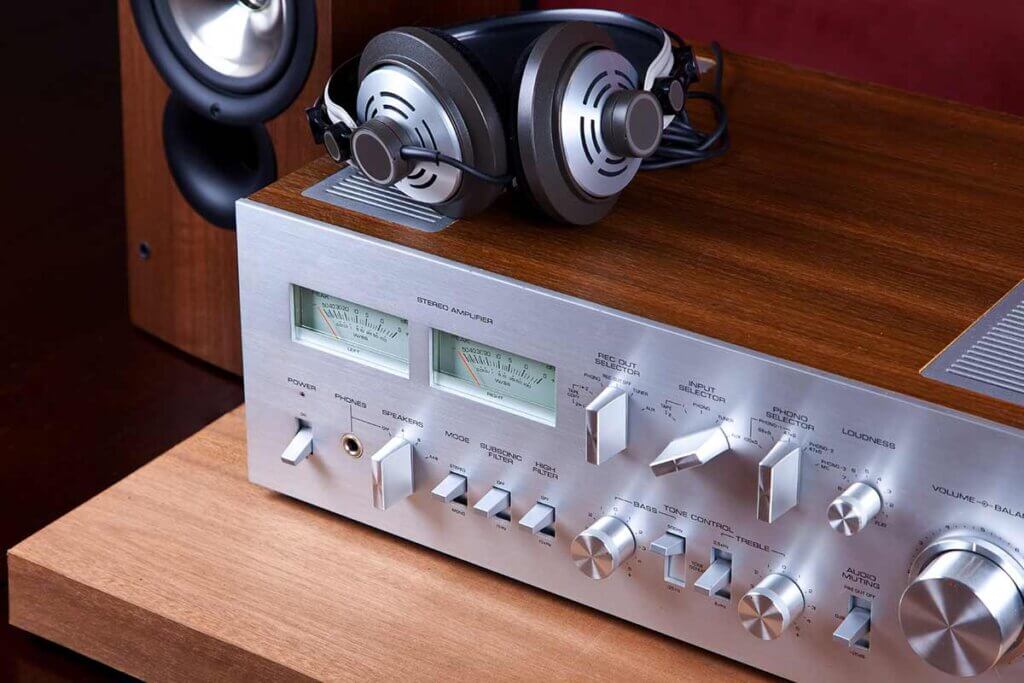
Can I use different amplifiers at the same time?
Some users wish to couple two integrated amplifiers or power amplifiers to the same speaker system, for example, one power amplifier for everyday radio listening and one for parties with audiophile guests. To make this possible, a switch must be installed to ensure the change. It should be noted, however, that this switch must be interrupting, so that the two integrated amplifiers or power amplifiers are never in operation at the same time. This is because there is a danger that one of the two will smoke out or even start a fire.

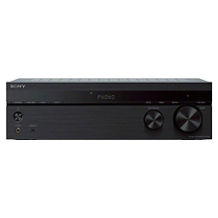
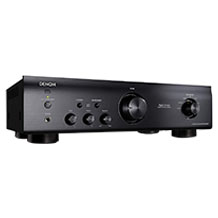
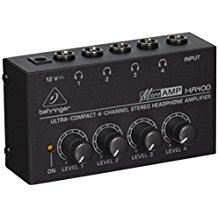
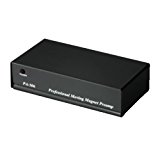
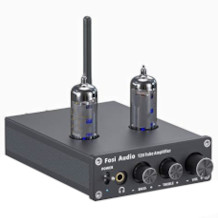
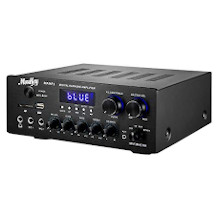
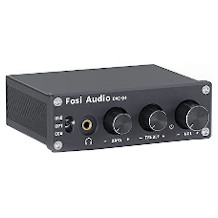
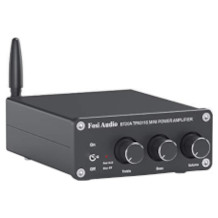
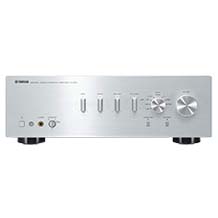
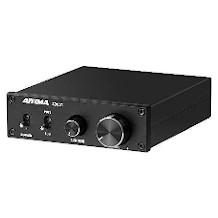
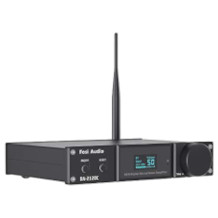
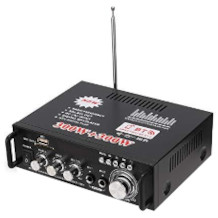

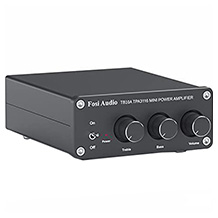
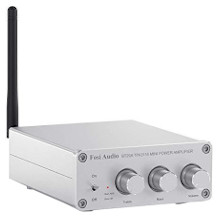

 3,407 reviews
3,407 reviews
